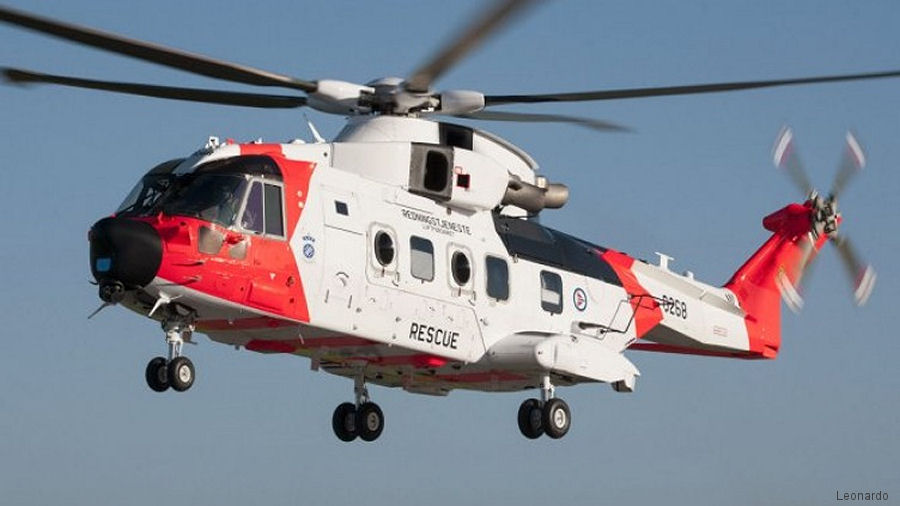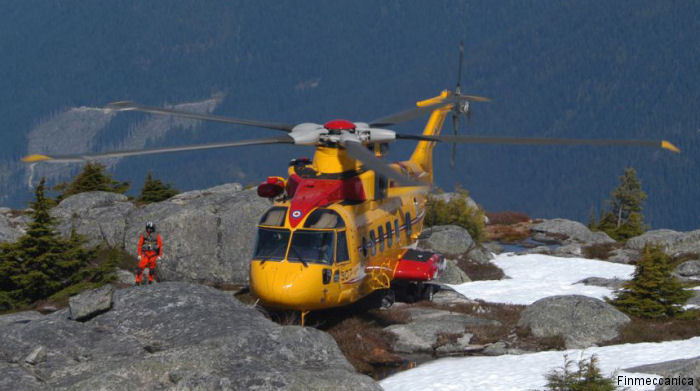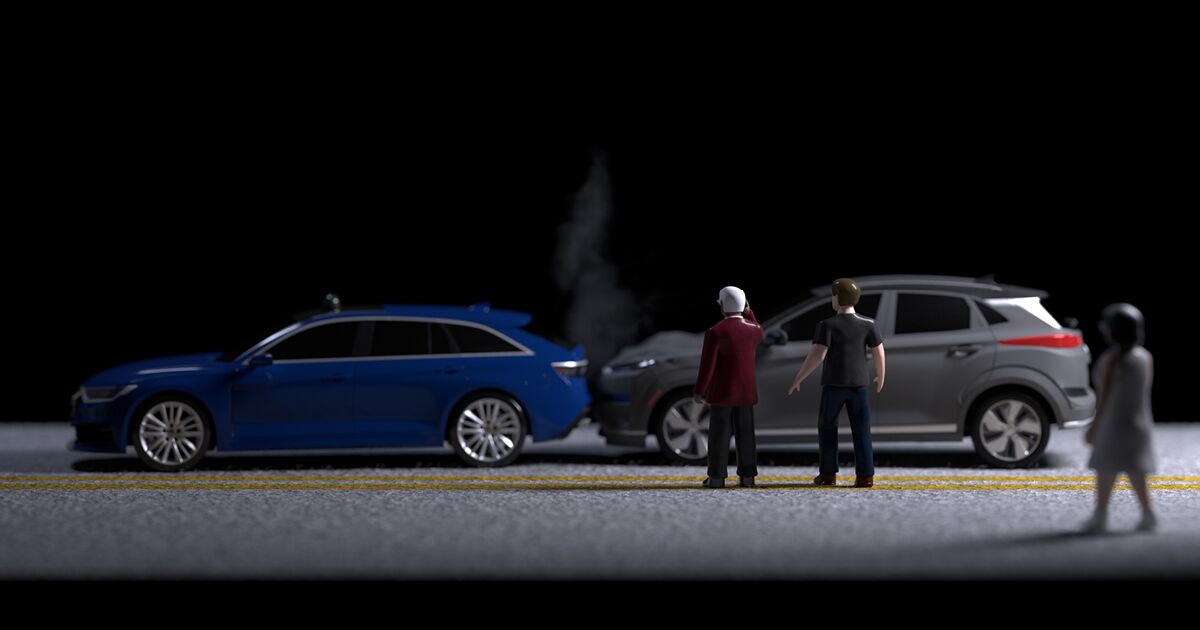While not saying how much the plan would cost, sky high by DND standards must be really high.
You are using an out of date browser. It may not display this or other websites correctly.
You should upgrade or use an alternative browser.
You should upgrade or use an alternative browser.
Liberals announce $1.24B sole-sourced deal to upgrade search and rescue helicopter fleet
- Thread starter MilEME09
- Start date
Eye In The Sky
Army.ca Legend
- Reaction score
- 3,790
- Points
- 1,160
Yup
Send an Uber.
Unmanned recovery helicopter
View attachment 71950
Why would you risk aircraft, crews and people on the ground if you didn't absolutely have to?
An unarmed helicopter can’t verify a persons identity. There’s some specific processes that happen during a recovery op that rescuers do in a non-permissible environment - we don’t just hop on the Osprey or helo and say “home James, and put some spice on it!”
Last edited:
Eye In The Sky
Army.ca Legend
- Reaction score
- 3,790
- Points
- 1,160
If medical assistance is required then by all means send the whole team. But why risk them if you don't have to. After all isn't it Survival, Evasion, Resistance, Escape training?
For morale for one thing. Imagine aircrew flying off into the badlands knowing no one is really going to come for them.
Aircrew take longer and more money to replace than lots of other trades. So there is a “needs of the service” aspect to get you back in the seat and flying missions again too.
SERE is temporary if done right and lucky. Aircrew are a fairly good propaganda tool.
Eye In The Sky
Army.ca Legend
- Reaction score
- 3,790
- Points
- 1,160
I had a conversation with a sar tech at the Summerside air show around 10 years ago. He said he once had to "bag" (breathing bag) a guy while being winched up in the basket in high seas (very windy). How is a drone going to do that If sar techs won't get in the back of drones?
Who is doing the hoisting to start with? It’s a people skill. Not one I can imagine a robot doing. Not in my lifetime at least. Or not without a lot of broken SAR Tech legs.
- Reaction score
- 16,371
- Points
- 1,160
Many of the good tugboat captains on this coast got their start as kids, pushing logs around with 9' dingy and small outboard. by the time they take their first ticket, the abilty to judge distance, forces, tides, wind are already ingrained into them.Driving by sight and using visual queues is a skill that will develop over time. I think the Navy expects too much of people too soon in this regard, while also not really teaching them how to use the tools at their disposal that will aide them in making that visual assessment.
With enough practice, they will get good at it but they need to be afforded the opportunity to practice. Our people aren't getting much practice these days.
- Reaction score
- 26,482
- Points
- 1,360
Sling load/SPIE-rig, perhaps. USMC Robi-K-MAXs sling autonomously…reverse that and hook a carabiner to the end of a sling below a hovering autonomous recovery craft, twomtugs on the sling, and up you go.Who is doing the hoisting to start with? It’s a people skill. Not one I can imagine a robot doing. Not in my lifetime at least. Or not without a lot of broken SAR Tech legs.
On other issues mentioned, if the aircrew to be recovered require intubating mid-hoist (would love to hear a medical opinion on that happening…may be a mess tale) I don’t think they’ll be doing much SEREing anyway…
Eye In The Sky
Army.ca Legend
- Reaction score
- 3,790
- Points
- 1,160
AETE doesn’t sign off on anything. It makes recommendations. DTAES (for airworthiness issues) and the Project Sponsor (for qualification issues) sign off on things.
@dapaterson yes, Aurora drivers have EFBs w/mounts.
Eye In The Sky
Army.ca Legend
- Reaction score
- 3,790
- Points
- 1,160
Sling load/SPIE-rig, perhaps. USMC Robi-K-MAXs sling autonomously…reverse that and hook a carabiner to the end of a sling below a hovering autonomous recovery craft, twomtugs on the sling, and up you go.
On other issues mentioned, if the aircrew to be recovered require intubating mid-hoist (would love to hear a medical opinion on that happening…may be a mess tale) I don’t think they’ll be doing much SEREing anyway…
My mind went to SAR Techs trying to get on boats off the coast, rescuers trying to get Stokes litters up, etc. “some stuff will work, some won’t”. I don’t think AI is ready yet for the truly dynamic stuff that can save, or cost, lives and legs.
- Reaction score
- 11,928
- Points
- 1,160
An unarmed helicopter can’t verify a persons identity. There’s some specific processes that happen during a recovery op that rescuers do in a non-permissible environment - we don’t just hop on the Osprey or helo and say “home James, and put some spice on it!”
I don't expect to see humans leave the field to robots. I do expect to see a lot fewer humans in the field, spread over a much larger area, accomplishing things that they couldn't otherwise do if they didn't have robots working for them and had to rely on muscle power and staying awake 24/7.
I'm curious to see how many two seater F16s the Ukrainians end up employing. I have a hunch that they will find it easier to locate and train non-flying UAV operators as WSOs and leave their few skilled pilots to manage the driving of their new aircraft.
- Reaction score
- 26,482
- Points
- 1,360
If I was down behind a line evading, and was being closed in on, I’d happily link my CSEL/PRC-116 to ‘Hover George’ take a cyber-Uber ride home!My mind went to SAR Techs trying to get on boats off the coast, rescuers trying to get Stokes litters up, etc. “some stuff will work, some won’t”. I don’t think AI is ready yet for the truly dynamic stuff that can save, or cost, lives and legs.
Eye In The Sky
Army.ca Legend
- Reaction score
- 3,790
- Points
- 1,160
If I was down behind a line evading, and was being closed in on, I’d happily link my CSEL/PRC-116 to ‘Hover George’ take a cyber-Uber ride home!
If that was my only option, so would I. Given the choice, though, I’d prefer someone who was about to pop me if I couldn’t remember what my favourite flavour of Hubba Bubba was.
And that persons pals crewing some bullet hoses fitted to “the aircraft”.
Eye In The Sky
Army.ca Legend
- Reaction score
- 3,790
- Points
- 1,160
I don't expect to see humans leave the field to robots. I do expect to see a lot fewer humans in the field, spread over a much larger area, accomplishing things that they couldn't otherwise do if they didn't have robots working for them and had to rely on muscle power and staying awake 24/7.
I'm curious to see how many two seater F16s the Ukrainians end up employing. I have a hunch that they will find it easier to locate and train non-flying UAV operators as WSOs and leave their few skilled pilots to manage the driving of their new aircraft.
I was pointing out that lots of things happen during a recovery op that an uncrewed air vehicle can’t do. Specific to CSAR stuff.
Not that it REALLY matters for CAF members though. CSAR isn’t a game we are a true player in. We just rely on those who can…
- Reaction score
- 26,482
- Points
- 1,360
If that’s one of your ISOPREP questions, you deserve to be popped…If that was my only option, so would I. Given the choice, though, I’d prefer someone who was about to pop me if I couldn’t remember what my favourite flavour of Hubba Bubba was.
And that persons pals crewing some bullet hoses fitted to “the aircraft”.
In keeping with traditions, the questions should be extremely embarrassing for the questioner to ask…
- Reaction score
- 22,254
- Points
- 1,010
Well wonders never cease. that looks like a FLIR upfront…
- Reaction score
- 37,682
- Points
- 1,210
Fitted for, not with?Well wonders never cease. that looks like a FLIR upfront…
Eye In The Sky
Army.ca Legend
- Reaction score
- 3,790
- Points
- 1,160
Probably more than just IR…

 www.helis.com
www.helis.com
So we are going 612 “ish”? Add AIS. Just do it, the SA is worth it.
Older article…. An investment in capability: SAR with the AW101-612

 www.helis.com
www.helis.com

AgustaWestland AW101 612
Operators, Versions and serials of AgustaWestland AW101 612 helicopter
So we are going 612 “ish”? Add AIS. Just do it, the SA is worth it.
Older article…. An investment in capability: SAR with the AW101-612

CH-149 Cormorant in Canadian Armed Forces
CH-149 Cormorant in Canadian Armed Forces helicopter service. Serials, bases and units.
Last edited:
- Reaction score
- 26,482
- Points
- 1,360
Maybe they’ll make a pitch to use the CC-295 Kingfisher’s EO/IR turrets…those ones won’t be likely used for a while…Well wonders never cease. that looks like a FLIR upfront…
Eye In The Sky
Army.ca Legend
- Reaction score
- 3,790
- Points
- 1,160
Maybe they’ll make a pitch to use the CC-295 Kingfisher’s EO/IR turrets…those ones won’t be likely used for a while…

- Reaction score
- 22,254
- Points
- 1,010
If ever…Maybe they’ll make a pitch to use the CC-295 Kingfisher’s EO/IR turrets…those ones won’t be likely used for a while…
- Reaction score
- 2,209
- Points
- 1,160
FSTO
Army.ca Fixture
- Reaction score
- 7,073
- Points
- 1,210
This is about cars, but according to this article, AI is still generations away from being able work at the level of a human brain.My mind went to SAR Techs trying to get on boats off the coast, rescuers trying to get Stokes litters up, etc. “some stuff will work, some won’t”. I don’t think AI is ready yet for the truly dynamic stuff that can save, or cost, lives and legs.

Even After $100 Billion, Self-Driving Cars Are Going Nowhere
They were supposed to be the future. But prominent detractors—including Anthony Levandowski, who pioneered the industry—are getting louder as the losses get bigger.
Excerpt:
For now, here’s what we know: Computers can run calculations a lot faster than we can, but they still have no idea how to process many common roadway variables. People driving down a city street with a few pigeons pecking away near the median know (a) that the pigeons will fly away as the car approaches and (b) that drivers behind them also know the pigeons will scatter. Drivers know, without having to think about it, that slamming the brakes wouldn’t just be unnecessary—it would be dangerous. So they maintain their speed.
What the smartest self-driving car “sees,” on the other hand, is a small obstacle. It doesn’t know where the obstacle came from or where it may go, only that the car is supposed to safely avoid obstacles, so it might respond by hitting the brakes. The best-case scenario is a small traffic jam, but braking suddenly could cause the next car coming down the road to rear-end it. Computers deal with their shortcomings through repetition, meaning that if you showed the same pigeon scenario to a self-driving car enough times, it might figure out how to handle it reliably. But it would likely have no idea how to deal with slightly different pigeons flying a slightly different way.
Similar threads
- Replies
- 2
- Views
- 11K
- Replies
- 65
- Views
- 75K
- Replies
- 15
- Views
- 50K
- Replies
- 493
- Views
- 323K


